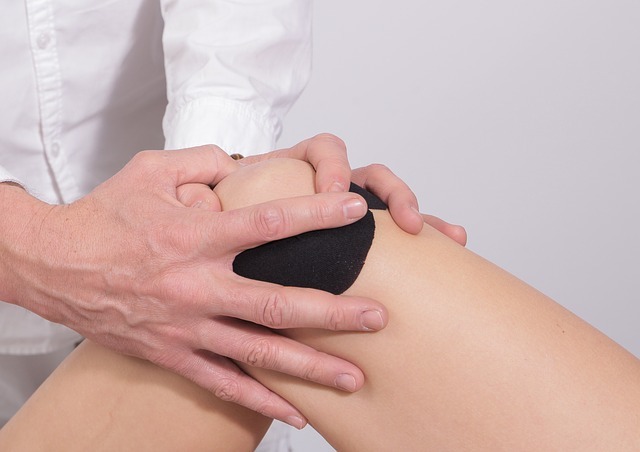Bicycle injuries, whether from a crash, improper form, or just too intense training, can really set you back. As cyclists, we look forward to our next ride, but injuries can mean putting that ride off for weeks or even months. No one wants to feel that their sport is out of reach due to pain and injury, especially when many of these injuries are preventable. By understanding the common cycling injuries, you can take steps to avoid them. Even when they are unavoidable, you can learn what signs to look for that might indicate trauma. The sooner you begin to treat an injury, the sooner you can get back on your bike.
Common injuries range from mild to severe, from sore knees to brain injuries. Remember that any cycling injury that is severe or pain that continues without improvement should be checked out with a medical professional. Here are 10 common bicycle injuries:
1. Knee pain: Knee pain is one of the most common overuse injuries. Knee pain can often be resolved by fixing the position of your cleats or adjusting the saddle. A saddle that is both too low or too high can cause knee pain. Sometimes knee pain comes from overtraining, or riding for a longer period of time at more intense levels. If you have developed knee pain, examine each of these issues and determine the likely cause. Making the proper adjustments to your bike or your training should bring an end to the pain.
For a free legal consultation,
call 1-844-242-9253
2. Saddle sores: Oh, the dreaded saddle sore! Friction between your saddle, skin, and clothes when you ride for long hours can present with a wicked rash. Use a cream to relieve the rash and try Body Glide Anti Saddle Sore Balm (great stuff!). Remember to keep your gear clean to prevent any chance of developing an infection.
3. Lower back pain: Lower back pain can be the result of ongoing stress on the spine. Unfortunately, cycling can really wreak havoc on your spine as it bears a lot of pressure when you ride. Make sure you are seated in the proper position based on your type of bike. Stretch your spine both before and after your ride by touching your toes several times and twisting your trunk. Hit the gym and build up your core muscles. You should ride with a slight forward tilt to your pelvis to help your spine remain neutral, so you may need to consider your position on the bike.
Click to contact our personal injury lawyers today
4. Numb feet: This all-too-common problem is often caused by tight shoes or shoes that are laced too tight. Make sure your shoes are wide enough for your feet and are not laced too tight. The cleats should not be too far forward on your feet, as that can increase numbness. Intense hill riding can also cause numb feet as it means you must apply extra pressure to the feet. Fortunately, most cases of numb feet resolve quickly.
Complete a Free Case Evaluation form now
5. Neck pain: Neck pain often comes from fatigue and poor body position on the bike. When you ride, the muscles in your neck naturally tighten. During a short ride, it’s not a big deal. But during an extended ride, it can really stress your muscles. Loosen your grip on the handlebars and practice relaxing your shoulders. Maintain good posture but focus on allowing the muscles to soften and relax.
6. Muscle fatigue/burn: Most every cyclist will experience muscle fatigue or burn at some point. This often occurs when you train more aggressively than normal. A build-up of lactic acid in the muscles can cause pain both when you are on the bike and for a couple of days afterwards. Massages and anti-inflammatories help but to get to the root of the matter, strengthen those muscles! If you are experiencing a lot of muscle fatigue and you have not changed your training level, you will want to carefully consider the cause. Illness, new medication, hormone problems, and heart and circulatory issues can all cause muscle fatigue, so be sure you get to the root of the problem with your physician.
7. Tendonitis: Achilles tendonitis and tendonitis in the knee can be a real pain. It results from inflammation and once you have it, you are often prone to getting it again. Take anti-inflammatories, rest, and use ice and elevation to reduce the pain. Ongoing pain should be managed by a physician who may prescribe physical therapy.
8. Impact injuries: If you are involved in a bicycle crash, you likely have impact injuries. These acute injuries range from scratches and bruises to broken bones and traumatic brain injury. If you are involved in a bicycle crash, it’s best to seek medical help right away. Often traumatic injuries are masked by the rush of adrenaline you experience when you are in a crash. Any crash that involves impact with your head or helmet should warrant immediate medical attention. Concussions are serious and can result in ongoing and even permanent injuries.
9. Hot foot: Hot foot is a burning or pain in the bottom of the foot. Like numb feet, it can be caused by excess pressure on the feet. Sometimes this occurs in the summer due to swelling of the feet or in the winter due to wearing thick socks. Consider purchasing a wider shoe or one with more give and look at your cleat placement to make sure the pressure is spread evenly over your feet.
10. Handlebar neuropathy: Handlebar neuropathy or handlebar palsy occurs when the ulnar nerve in the wrist is compressed over a long period of time as you ride. You may notice numbness or weakness of your hands and fingers and the inability to smoothly move your fingers. You may feel numbness or weakness throughout your hand and wrist. Rest the hands and wrists and check for proper positioning of your handlebar. Splints can be worn to alleviate pressure on the ulnar nerve. Both head and ice can be helpful to reduce swelling and bring feeling back into the hand and fingers.
Although bicycle related injuries are common, there are a few steps you can take to lessen the risk of an injury. Wear a bicycle helmet, always, when you ride. Wearing a helmet reduces the risk of head injuries substantially. If you ride regularly, have your bike fit checked professionally. Injuries occur when you are not riding with the proper posture.
Be aware of motor vehicles on the road around you, especially at intersections. The majority of crashes occur at intersections, where motorists often overlook cyclists. Utilize lights and reflectors to help you remain visible, but never assume that a motorist can see you.
No matter which common bicycle injury has struck you, remember that the internet is not a substitute for medical care. If you have questions about your injury or are experiencing ongoing pain or discomfort, contact a doctor for treatment. If you are involved in a crash, your injuries should be assessed by a physician. Injuries that may seem minor initially can develop into more serious issues in the days and weeks following your crash, so it’s important to get care right away.
If you have been injured as a result of a bicycle crash with a vehicle, you probably have many questions concerning how best to handle your case. Often, the insurance adjuster calls with an offer almost immediately after the crash occurs. Don’t be blindsided by these lowball offers. Injuries may require extensive and ongoing treatment, and you may need time away from work to heal. It’s best to consult with an experienced bicycle accident attorney like the ones at Kass & Moses. Call Kass & Moses today to learn more about how we can help you get the compensation that you deserve for your injuries.
Call or text 1-844-242-9253 or complete a Free Case Evaluation form


